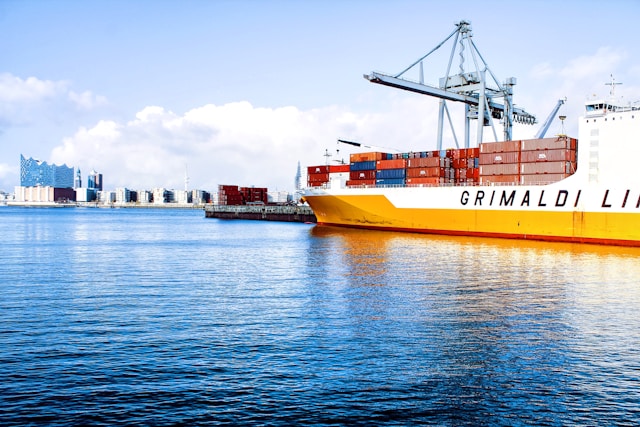How to Ship Your Belongings When Moving to the Caribbean
Moving to the Caribbean

Boxes of belongings prepared to be shipped after moving to the Caribbean IMAGE: pexels
Moving to the Caribbean can be exciting but requires careful planning and preparation. Whether you are relocating for work, retirement, or simply a change of scenery, understanding the logistics of shipping your belongings is crucial. The process involves numerous steps, from choosing the right shipping method to dealing with customs regulations. But don’t worry, as you have us to help you every step of the way. You can focus on finding ways to overcome Caribbean culture shock and start enjoying this paradise sooner while we have you covered with practical tips to make your move as seamless as possible.
Planning Your Move
The first step in moving to the Caribbean is to assess the volume and type of belongings you need to ship. Start by inventorying all your items and deciding what you will pack, bring, and leave behind. Consider the climate and lifestyle in the Caribbean when making these decisions. For instance, you might not need heavy winter clothing but will benefit from lightweight, breathable fabrics.

Make an inventory to understand how many belongings you need to ship for a smooth moving process. Image pexels
Creating a moving checklist is essential for staying organized. Your checklist should include researching your Caribbean destination’s customs regulations and import restrictions. Different countries in the Caribbean have varying rules about what can be brought in, so it’s crucial to understand these beforehand. Also, budget for the move by estimating the costs of shipping your belongings. That includes the shipping fees, packing materials, insurance, and potential customs duties.
Choosing a Shipping Method
When shipping your belongings to the Caribbean, you generally have two main options: air freight and sea freight. Each method has pros and cons, which you must consider based on your needs.
Air freight is faster and more reliable but can be significantly more expensive, especially for large volumes of goods. It is an excellent choice if you need your belongings to arrive quickly. Sea freight, on the other hand, is more cost-effective and can handle larger shipments. However, it takes longer for your items to arrive and may involve more complex logistics.
Factors to consider when choosing a shipping method include cost, time, and volume of your belongings. For instance, sea freight may be better if you move a substantial amount of furniture and household goods. It’s also important to choose a reputable shipping company.
Selecting a Moving Company
Finding a reputable shipping company is crucial for a smooth move. Start by conducting thorough research online and asking for recommendations from friends or family who have moved internationally. Look for companies with experience in Caribbean relocations and check their licensing and certifications.
When evaluating moving companies, consider their reputation, customer reviews, and the range of services they offer. Read reviews on trusted platforms to understand their reliability and customer service. It’s also beneficial to obtain and compare quotes from multiple companies to ensure you are getting a fair price. Detailed quotes should outline all costs involved, including potential hidden fees.
U. Santini Moving and Storage New York is a well-regarded company whose team of international movers can ensure your belongings reach your new Caribbean home safely and efficiently. With over 90 years of experience in the moving industry, it’s a no-brainer why so many people hire them for their international or local moves. Whether you are moving from New York or relocating from another state, their expertise in navigating complex international logistics makes them a top choice for ensuring a hassle-free transition.

Choosing a reputable shipping company is crucial when moving to the Caribbean to ensure your items arrive safely. Image unsplash
Packing Your Belongings
Efficient and safe packing is key to ensuring your belongings arrive intact. Start by gathering recommended packing materials such as sturdy boxes, bubble wrap, and packing paper. Use these materials to protect your items during transit. Consider additional cushioning and use specialty containers for fragile and valuable items.
Labeling and inventorying your items is essential for keeping track of your belongings and making the unpacking process easier. Mark each box with its contents and the room it belongs to in your new home. That will help you stay organized and ensure nothing is misplaced.
Packing fragile and valuable items requires extra care. Wrap each item individually and use bubble wrap or packing paper to provide cushioning. Disassembling large furniture can also make the packing process more manageable. Protect surfaces and components with appropriate padding to prevent damage during transport.
Documentation and Customs
Shipping belongings internationally involves significant paperwork. Ensure you have all the documentation for shipping to the Caribbean, including a detailed inventory of your items, customs forms, and any necessary import permits. Accurate and complete documentation is crucial to avoid delays and additional costs at customs.
Customs forms and declarations must be filled out correctly, declaring all items being shipped. Misdeclaring or omitting items can lead to penalties or confiscation of goods. Understanding import duties and taxes is also essential. Different Caribbean countries have different fee structures, and knowing these in advance can help you budget accordingly.
To avoid customs delays, ensure all your paperwork is in order and consider working with a customs broker if needed. They can provide expert advice and assistance in navigating the customs process.
Shipping Process and Timeline
The shipping process involves several steps, from packing to delivery. Once packed and labeled, your belongings will be picked up by the shipping company and transported to the port or airport. From there, they will be loaded onto the shipping vessel or plane and begin their journey to the Caribbean.
The timeline for shipping can vary depending on the method chosen and the distance to your destination. Air freight typically takes a few days to a week, while sea freight can take several weeks to a few months. It’s important to track your shipment to stay informed about its progress. Most shipping companies provide tracking services, allowing you to monitor your belongings in real time.
Maintaining communication with the shipping company during transit is essential. Stay in touch for updates and to address any issues that may arise. This proactive approach can help ensure a smoother process and prompt resolution of any problems.
Receiving Your Belongings in the Caribbean
Upon arrival in the Caribbean, your belongings must be cleared by customs. Familiarize yourself with the customs clearance procedures of your destination country. That typically involves presenting your documentation and possibly paying import duties and taxes.

Plan everything carefully so you can start enjoying your Caribbean home and lifestyle as quickly as possible. Image unsplash
Inspect your belongings for damage as soon as they arrive. If you find any lost or damaged items, document the issues and report them to the shipping company immediately. Promptly filing a claim can help you get compensation for any damages.
Good Luck Moving to the Caribbean
Moving to the Caribbean is a significant step that requires careful planning and execution. You can ensure a smooth and stress-free move by following the steps outlined in this guide. Each step is crucial for a successful relocation, from assessing your belongings to choosing the right shipping method and company, packing efficiently, and handling customs documentation.
Remember, the key to a successful move is preparation and staying organized. With the right approach, you can look forward to enjoying your new life in the Caribbean, where plenty of adventures are waiting and natural attractions to explore. Embrace the adventure and the beautiful surroundings; soon, you’ll feel right at home in this stunning part of the world.





